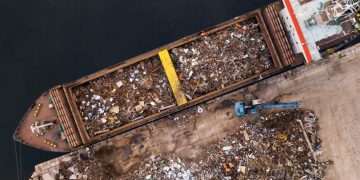New EPA requirements in the revised VGP for Environmentally Acceptable Lubricants (EALs)

In March 2013, the US Environmental Protection Agency (EPA) issued a final Vessel General Permit (VGP) regulating discharges from commercial vessels in order to protect the nation’s water from ship-borne pollutants and reduce invasive species in US waters. The VGP will enter into force on 19 December 2013 and replace the current VGP (2008 VGP). This newsletter addresses the new EPA requirements in the revised VGP for Environmentally Acceptable Lubricants (EALs), also known as biodegradable oils (although EAL requirements comprise more than just biodegradability).
The VGP requires ships sailing in US waters to use EALs in all oil-to-sea interfaces “unless technically infeasible”.
The most relevant components are the stern tube, rudder bearings, CP propellers, thrusters and fin stabilisers. However, any ship components that can potentially cause the leakage of lubricants into the sea are in principle to be considered according to the VGP.
The challenge for each shipowner trading in US waters will be to consider which lubricants on board its vessels shall be changed to EALs and when, or alternatively to decide not to do so as this is deemed technically infeasible.
Oil companies and some other suppliers of lubricants are now in the process of introducing products compliant with the EAL requirements to the market. Although environmentally preferable, EALs may have some major disadvantages. The most important one is that many conventional rubber (seal) materials are not compatible with the new EALs. The EALs will also absorb more water than mineral oils, so water control (i.e. sticking to the recommendation of the EAL supplier) becomes important to maintain lubrication capacity and keep the risk of corrosion and bacteria growth under control.
As a market response to these issues, the seal manufacturers have, each according to their own testing principles, tested combinations of seals and EALs. The tests have been done brand by brand, resulting in lists of compatible oils and seals, usually with target lives of 2.5 years. Taking into account the vessel’s docking intervals, EALs that are compatible with the seals installed should be sought for all oil-to-sea interfaces.
Technically infeasible
The understanding of the term “unless technically infeasible” is at present uncertain, but the following guidelines can be assumed to be acceptable under the VGP:
-
If the ship has seals that are not compatible with any EALs, it can continue to use mineral oil until the next planned docking, when the seals are to be replaced.
-
If the original equipment manufacturer (OEM) has no recommended seal-EAL combination for its product, the use of EALs can be considered “technically infeasible”.
-
For new ships or when replacing equipment, the use of EALs is “technically infeasible” only if no manufacturer can deliver an EAL-lubricated product that is suitable for the purpose.
-
If the use of an EAL in an oil-to-sea interface is claimed to be “technically infeasible”, the ship must carry documentation to that effect. Such a document/statement written by the manufacturer or owner shall be not more than one year old and confirm the factual situation.
Source: DNV




























































